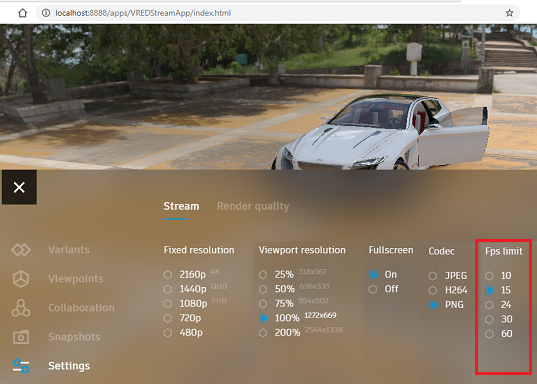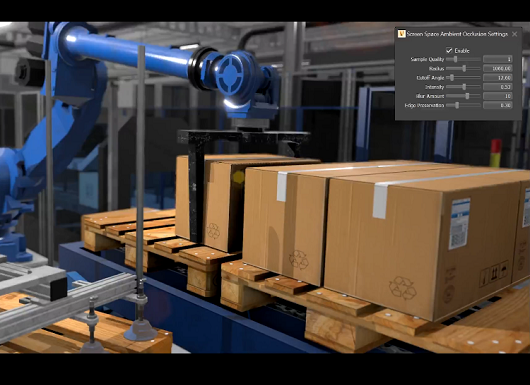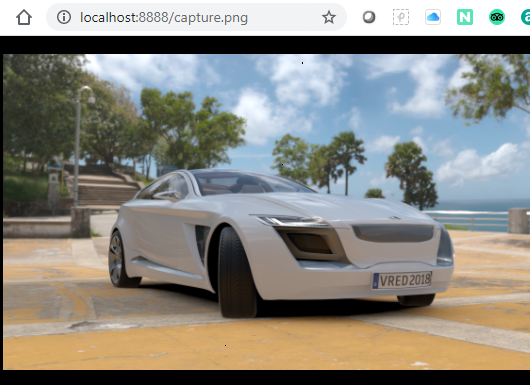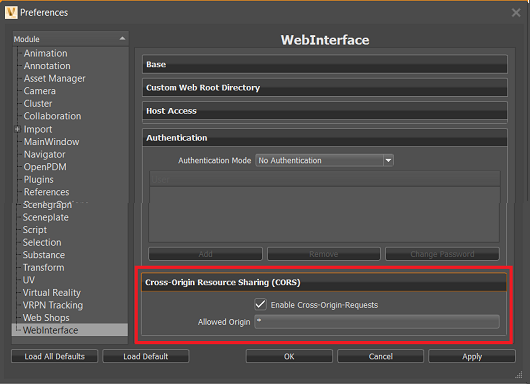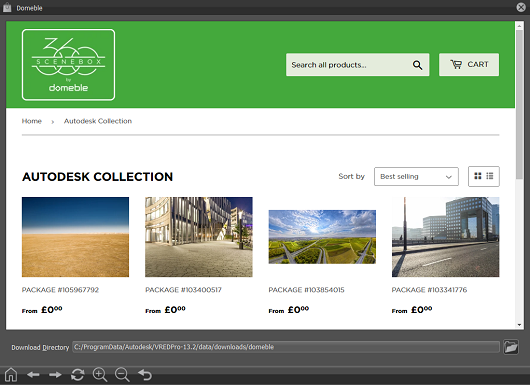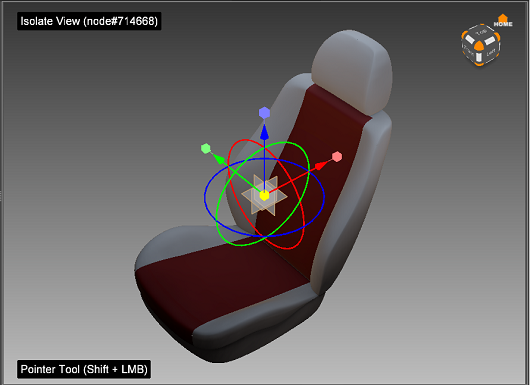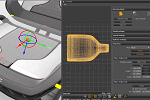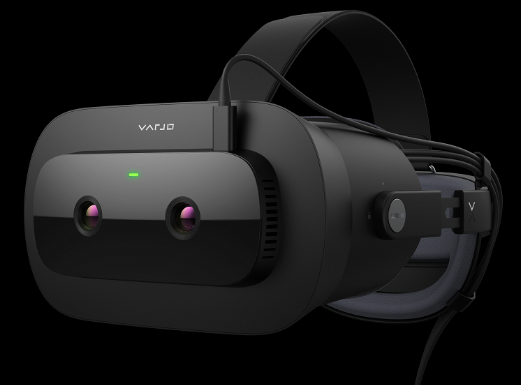VRED 2021
Learn about new features and improvements in this release of VRED. For technical details and bug fixes, see the 2021.3 release notes and recommended system requirements to ensure Autodesk VRED products are running to their potential.
What's New in 2021.3
Click on the cards below for further information.
2021.3 Additional Enhancements
Reverse Z Buffer - Implemented reverse Z-Buffer to reduce Z-fighting issues when rendering.
-edit_preferences- Allows the configuration of a Web Interface or other VRED Core parameters through the preferences. Use the VREDServerNode and VRED Core-edit_preferencesparameter to open the Preference Editor without a UI and replace the VRED Core preference file with the VRED Professional one.Improved Stream Management - Refactored the code of native JPEG & H264 stream to support the improved stream management for touch devices and fullscreen displays. If the H264 codec is not installed, an error appears.
Faster Stillframe Antialiasing in OpenGL on GPU - Does stillframe antialiasing in OpenGL on the GPU, which is much faster.
OpenH264 Codec - Added support for the latest Cisco OpenH264 v2.0.0, v2.1.0, and v2.1.1 codecs required for H264 web streaming available from the official Cisco GitHub page.
Presenter and Viewer - Added Presenter and Viewer modes to the Collaboration section in VRED StreamApp.

Web Interface Redesign - Redesigned the Steam App user interface.

Manipulate - Added a triplanar texture manipulator (use the Manipulate button) to the Projection section of the UV Editor.
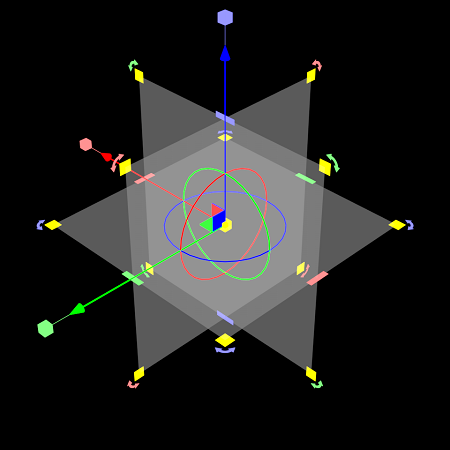
Python Types - These types used in the Python interface are now imported to the Python namespace by default:
- QMainWindow
- QMatrix4x4
- QMenu
- QPixmap
- QPointF
- QQuaternion
- QSize
- QTime
- QToolBar
- QVector2D
- QVector3D
- QVector4D
- QWidget
- QMimeData
- QDomDocument
Fit Size - Added the Fit Size option to the Place 2D Texture section for Triplanar projection.
PDFs - Enabled PDFs to be displayed in WebEngines.
What's New in 2021.2
Click on the cards below for further information.
2021.2 Additional Enhancements
SDKs: Updated SDKs for OpenVR to 1.12.5 and Oculus to 1.43.0
Qt: Updated Qt to version 5.15 to include the Chromium Engine 80
Dockable Windows: Improved the initial position of dockable module windows
Deprecated Python Commands: Marked
deleteMaterialsandundeleteMaterialsas deprecated in Python documentationExpiration Protection: Improved the expiration date protection for VRED Go
Web Interface Resolution: Added an option to fix the resolution for multiple users using the web interface
What's New in 2021.1
Click on the cards below for further information.
2021.1 Additional Enhancements
QMC (Quasi-Monte Carlo Sampling): QMC is now used for random numbers in raytracing.
Copy and Paste UVs: Added option to copy UVs from one object and paste them to another, as long as the geometries have the same vertex count. From the Scenegraph context menu, select Edit > Copy UVs or Edit > Paste UVs.
Web Interface User and Password: Allow to configure users and passwords for the Web Server.
Web Certificate: Added support to create self-signed Web Certificates.
HTTP 1.1: Now HTTP 1.1 has persistent connections with VRED.
Documentation Language: Online documentation from the Help menu respects the UI language settings.Therefore, if VRED is displayed in Japanese, the online documentation is also displayed in Japanese.
File Format Import Dialog: Cleaned up the File Format Import dialog and re-ordered file formats by application.
Stream Terminal Message: A terminal message appears when devices disconnect from the stream.
Web Interface Password: Customers can now set a password for the web interface access to restrict access to a group of people.
AVX2 on AMD systems: Added support for AVX2 on AMD systems. This makes raytracing calculations faster.
AI Denoiser and GPU Raytracing: Made improvements, as well as bugfixes.
What's New in 2021
Here are the new features and enhancements found in VRED 2021 products:
VRED Core - VRED Core 2021 supports streaming of CPU raytracing, GPU raytracing, and OpenGL content on both Windows and Linux. CPU raytracing works out of the box on all supported hardware. For GPU raytracing and for OpenGL, you need a supported graphics card and to start VRED Core with the command line parameter
-hide_gui.VRED Go - Packages a scene and viewer into a single executable you can store on a USB stick, then give someone to view on any machine, without a license. VRED Go uses AES-256 encryption and the scene data is never extracted. In conjunction with a password, the encryption is very safe.
GPU Raytracing - Provides flexibility in your hardward choices. Effortlessly switch between CPU and GPU raytracing, using the Raytracing dropdown. You must have an NVIDIA driver version 441.66 or newer.
Autodesk Drive smart references support- Provides a way to work collaboratively from any location when working with projects containing references. Drag your VPB into a shared folder on Autodesk Drive. It will automatically search for dependencies, such as references, and upload the project and all reference files. When files are updated, a notification is triggered, indicating an update is available.
Script Editor integration - Adds Script Editor features into the Script tab of the Variant Sets module and Script preferences.

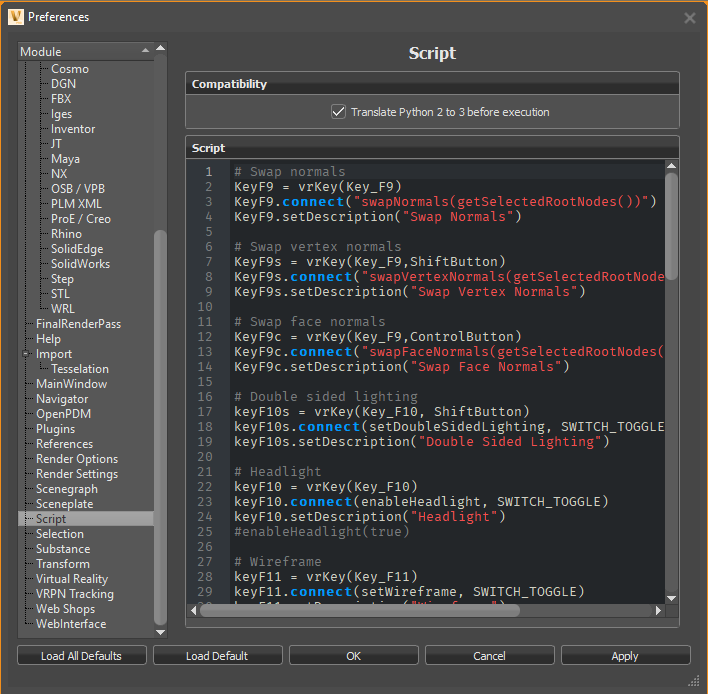
Content Adaptive Shading - Sets the shading rate per material, which is useful for materials with fine patterns that are prone to the moiré effect. This can be fine-tuned. Use Content Adaptive Shading to render a specific material in a higher quality.
getVariantSetPreview(name) - Gets the variant set preview (for the new web interface) as a base64 encoded string, similar to
getViewpointPreview.Subsurface Scattering in VRED Design - This option is now available in the Material Editor in VRED Design and simulates the effect of light entering an object and scattering beneath its surface. Use this for the realistic rendering of materials, such as translucent plastic, marble, skin, leaves, wax, and milk. With these types of materials, not all light reflects from a surface. Some of it will penetrate below the surface of an illuminated object. There, it will be absorbed by the material and scattered internally. Some of this scattered light will make its way back out of the surface and become visible to the camera.
VRED Stream App - Added this app as an improvement to the VRED App to enable live streaming of a rendered image. Once the Web Interface is activated in the preferences and the VRED App is started, use localhost:8888 as the URL in a browser.
2021 Additional Enhancements
Web Streaming - Use Stream Active to determine whether web streaming is enabled or disabled. With a web-engine frontplate created and selected in the Sceneplate Editor, in the Properties section of the attributes, to enable streaming of the web content, ensure Stream Active is checked. To disable the streaming web content, uncheck Stream Active.
Pause key for Python - Interrupt the Python interpreter, using the Pause key. For example, execute this script,
for i in range (0, 10000): print (i)then press the Pause key. A dialog will appear, asking whether to interrupt the Python interpreter or not.
A message dialog appears, asking if you want to interrupt the Python interpreter after clicking New scene. Click No. If you click Yes, VRED will crash.
Faster VRED Installation - Installing VRED is faster, thanks to added support for a new on-demand installation service.
Illumination Mode name changes - With the addition of GPU raytracing, the following option names were changed to be more accurate:
- CPU Rasterizer is now Precomputed
- Precomputed Illumination is now Precomputed + Reflections
Light Link Set - When a Light Link Set is deleted, local lighting is now deactivated for all lights that were ONLY in that set.
Lens Flare Properties - Added support for editing of lens flare properties, when using multi-selection for lights.
Ghost Line Editor - In the Light Editor, the Ghost Line Editor is now disabled, if multiple ghost lines are selected.
Lens Flare Line Editor - In the Light Editor, the Lens Flare Line Editor is now disabled, if multiple light sources are selected.
Lens Flares - In the Light Editor, when multiple lights are selected, the lens flare elements are hidden.
Light Nodes in Camera Tree - When a light is created, using the Create a new light option in the Light Editor, a Scene Tree light node now appears in the Camera Editor's Scene Tree.
Ghost Line Controls - In the Light Editor, ghost line controls are now disabled, if multiple ghost lines are selected.
Zoom and Pan in Ghost Line Editor - Added Zoom In, Zoom Out, Fit View, and panning to the Ghost Line Editor. For shortcuts, see About Lens Flares and Elements.
VRED Denoiser using OptiX 7 - We are now using the OptiX 7 denoiser, which is faster, works on Maxwell NVIDIA GPUs and newer, and requires a driver version 441.66 or newer.
Object-based Python Interface - Added an object-based Python interface for various functions, such as setting text or changing color, to the Annotation module and the Light Editor.
For example, to create an annotation, use
vrAnnotationService.createAnnotation(name), which returns avrdAnnotationNodeobject. On that object, you can now set properties like text, position, size, and more. Refer to the Python V.2.0 documentation (Help > Python Documentation).Environment Variables - Added a list of the VRED-specific and external environment variables to the documentation, and they can also be found in the Python documentation (Help > Python Documentation), as the second link in the table of contents.
Merge Sub-Reference Materials - Added the Merge Sub-Reference Materials option to the File Specific Options of the Import File(s) module. Use it for controlling how duplicate materials are handled when importing CAD assemblies and PLMXML files. When disabled, duplicate materials will NOT be merged. If an identical material is referenced by sub-referenced files, an additional instance of the material is created for every occurrence of the material in the import. This option is enabled by default.
VIVE Cosmos controllers - Added support for VIVE Cosmos controllers.
Added subsurface scattering examples to assets for the Asset Manager.
Upgraded Python support to Python 3.7.4
For 2021, we have stopped supporting Windows 7.
